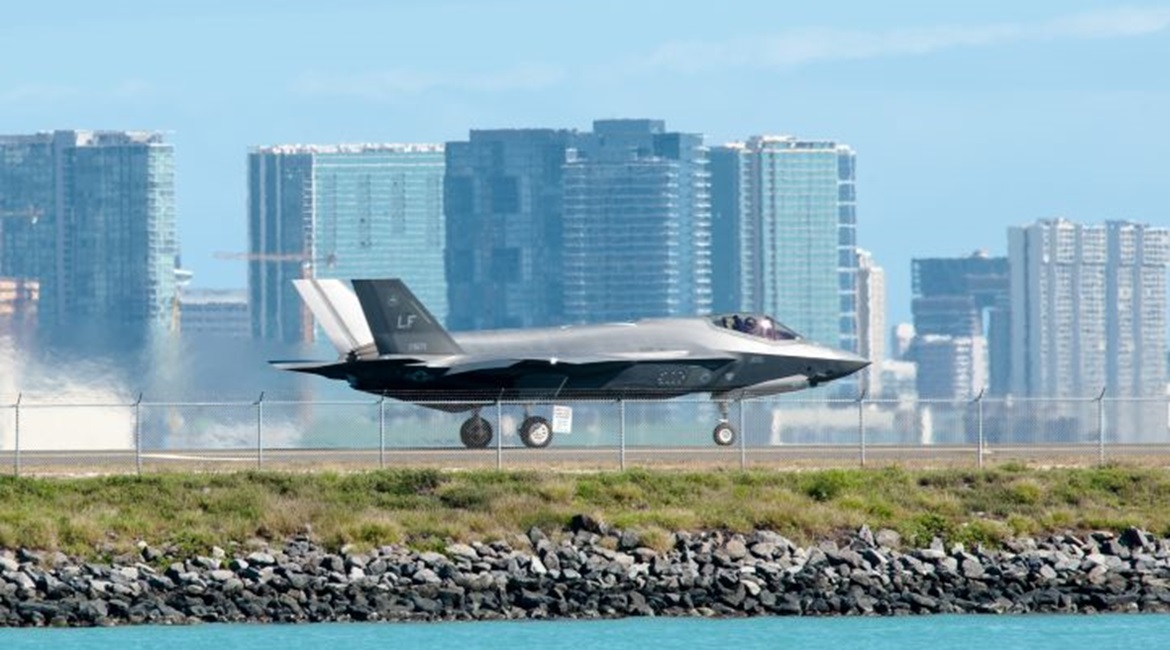
The Pentagon has restricted gun use on Lot 9 and newer Lockheed Martin F-35A Lightning II Joint Strike Fighter (JSF) conventional variants to combat-only after discovering cracks in the aircraft after gun operation.
Robert Behler, director of operational test and evaluation (DOT&E), said in his fiscal year 2019 (FY 2019) report released on 30 January that units flying these newer F-35As discovered cracks in the outer mold-line coatings and the underlying chine longeron skin, near the gun muzzle, after the gun was used. F-35A Lot 9 aircraft were delivered in 2017.

A F-35A, assigned to Luke Air Force Base, Arizona, taxis down the Honolulu Airport runway on 29 January 2019. Newer model F-35As have developed cracking in the outer mold-line coatings and the underlying chine longeron skin after gun use. (US Air Force)
All three variants have a 25 mm gun. The F-35A gun is internal while the F-35B short take-off and vertical landing (STOVL) model and the F-35C aircraft carrier variant each use an external gun pod.
Differences in the outer mold-line fairing mounting make the gun pods unique to a specific variant. For example, a F-35B gun pod cannot be mounted on a F-35C aircraft. Lockheed Martin spokesperson Brett Ashworth said on 1 February that the B- and C-models carry a low observable belly gun pod mounted on the centreline.
Most of the FY 2019 report repeats the same concerns about the F-35A gun from the previous year’s report – that the gun’s accuracy is unacceptable. On the other hand, the F-35B and C-model air-to-ground accuracy results so far have been consistent and meet the contract specifications. DOT&E said the results do not show the accuracy errors of the internal F-35A gun.
Looking to read the full article?
Gain unlimited access to Janes news and more...


